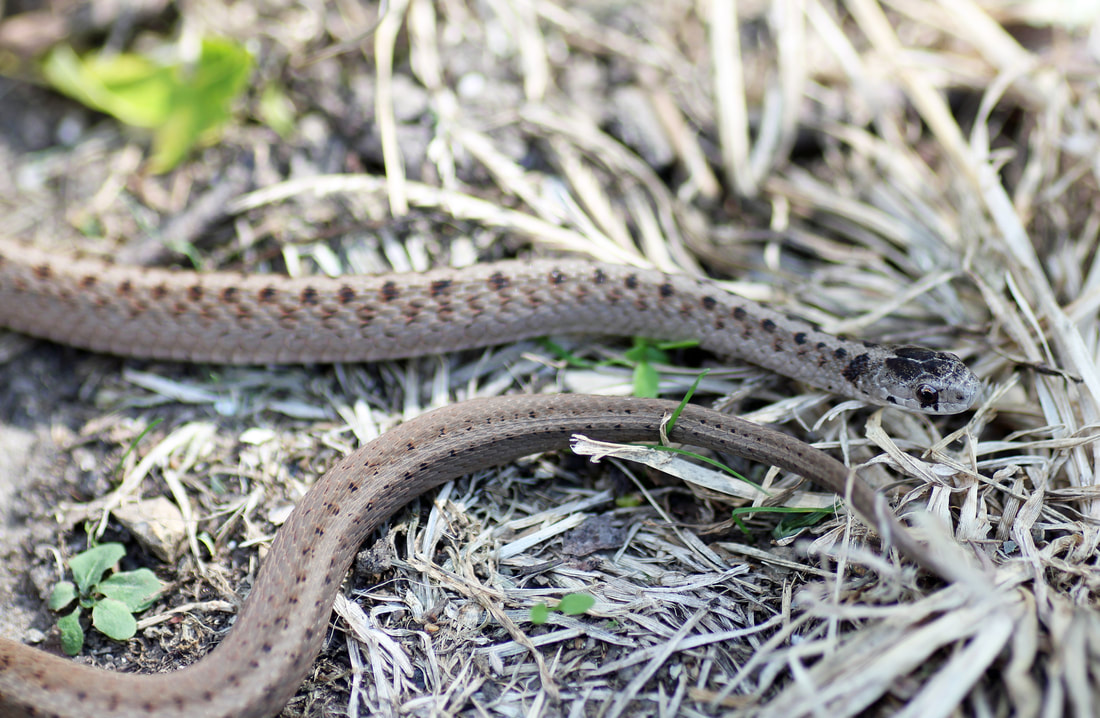MIDLAND BROWN SNAKE
Storeria dekayi wrightoru
Constrictor- Nonvenomous
The color of this snake varies from yellowish-brown to reddish-brown to dark brown or gray. There is a light tan defined stripe down the back with a row of dark spots on either side. Dark lines cross the back, connecting the dark spots on either side. The dots fade to brown near the tail. The under surface is pale yellow, brownish, or pinkish with small black dots along the edges.
Adults are 10-14 inches Juv.3-5 inches. Active from April to November. Gives live birth to approximately 20 babies late July to September.
Small snakes in general hide and are very shy and secretive. Hides under bark, logs, flat rocks and even trash. They like moist areas near ponds and marshes, bogs and possibly damp woods and rocky areas. Presumed to be found statewide but it intergrades with the Texas brown snake subspecies version on the western sides of Missouri.
The snakes eat earthworms, slugs, land snails, and soft bodied insects.
The color of this snake varies from yellowish-brown to reddish-brown to dark brown or gray. There is a light tan defined stripe down the back with a row of dark spots on either side. Dark lines cross the back, connecting the dark spots on either side. The dots fade to brown near the tail. The under surface is pale yellow, brownish, or pinkish with small black dots along the edges.
Adults are 10-14 inches Juv.3-5 inches. Active from April to November. Gives live birth to approximately 20 babies late July to September.
Small snakes in general hide and are very shy and secretive. Hides under bark, logs, flat rocks and even trash. They like moist areas near ponds and marshes, bogs and possibly damp woods and rocky areas. Presumed to be found statewide but it intergrades with the Texas brown snake subspecies version on the western sides of Missouri.
The snakes eat earthworms, slugs, land snails, and soft bodied insects.


